
"Archaeoraptor" is the informal generic name for a fossil chimera from China in an article published in National Geographic magazine in 1999. The magazine claimed that the fossil was a "missing link" between birds and terrestrial theropod dinosaurs. Even before this publication, there had been severe doubts about the fossil's authenticity. A further scientific study showed it to be a forgery constructed from rearranged pieces of real fossils from different species. Zhou et al. found that the head and upper body belong to a specimen of the primitive fossil bird Yanornis. A 2002 study found that the tail belongs to a small winged dromaeosaur, Microraptor, named in 2000. The legs and feet belong to an as-yet-unknown-animal.

Annie Montague Alexander was an explorer, naturalist, paleontological collector, and philanthropist.
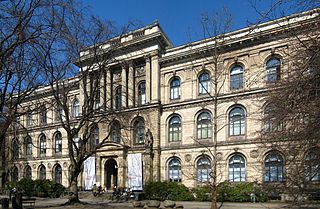
The Natural History Museum is a natural history museum located in Berlin, Germany. It exhibits a vast range of specimens from various segments of natural history and in such domain it is one of three major museums in Germany alongside Naturmuseum Senckenberg in Frankfurt and Museum Koenig in Bonn.
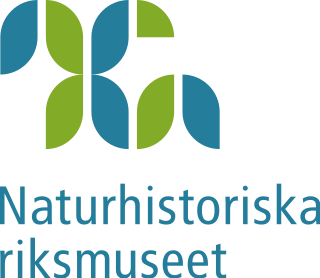
The Swedish Museum of Natural History, in Stockholm, is one of two major museums of natural history in Sweden, the other one being located in Gothenburg.

Psittacosaurus is a genus of extinct ceratopsian dinosaur from the Early Cretaceous of what is now Asia, existing between 126 and 101 million years ago. It is notable for being the most species-rich non-avian dinosaur genus. Up to 12 species are known, from across China, Mongolia, Russia, and Thailand. The species of Psittacosaurus were obligate bipeds at adulthood, with a high skull and a robust beak. One individual was found preserved with long filaments on the tail, similar to those of Tianyulong. Psittacosaurus probably had complex behaviours, based on the proportions and relative size of the brain. It may have been active for short periods of time during the day and night, and had well-developed senses of smell and vision.

Euhelopus is a genus of sauropod dinosaur that lived between 145 and 133 million years ago during the Berriasian and Valanginian stages of the Early Cretaceous in what is now Shandong Province in China. It was a large quadrupedal herbivore. Like sauropods such as brachiosaurs and titanosaurs, Euhelopus had longer forelegs than hind legs. This discovery was paleontologically significant because it represented the first dinosaur scientifically investigated from China: seen in 1913, rediscovered in 1922, and excavated in 1923 and studied by T'an during the same year. Unlike most sauropod specimens, it has a relatively complete skull.
Sauroplites is a genus of herbivorous ankylosaurian dinosaur from the Early Cretaceous of China.
Heishansaurus, meaning "Heishan lizard" after the area in China where it was discovered, is the name given to a dubious genus of herbivorous ornithischian dinosaur, probably belonging to the Ankylosauridae.

Charles Whitney Gilmore was an American paleontologist who gained renown in the early 20th century for his work on vertebrate fossils during his career at the United States National Museum. Gilmore named many dinosaurs in North America and Mongolia, including the Cretaceous sauropod Alamosaurus, Alectrosaurus, Archaeornithomimus, Bactrosaurus, Brachyceratops, Chirostenotes, Mongolosaurus, Parrosaurus, Pinacosaurus, Styracosaurus ovatus and Thescelosaurus.
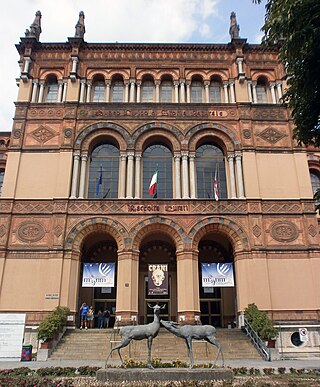
The Museo Civico di Storia Naturale di Milano is a museum in Milan, Italy. It was founded in 1838 when naturalist Giuseppe de Cristoforis donated his collections to the city. Its first director was Giorgio Jan.
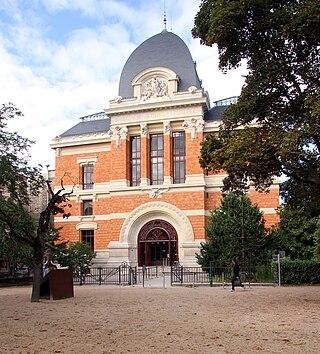
The Gallery of Paleontology and Comparative Anatomy is a part of the French National Museum of Natural History. It is situated in the Jardin des plantes in Paris near the Gare d'Austerlitz.
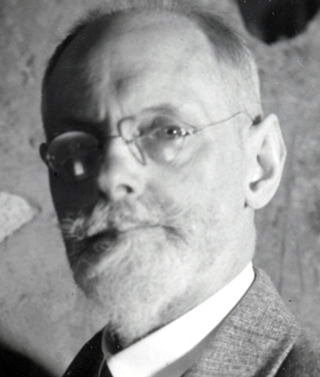
Carl Johan Josef Ernst Wiman was a Swedish palaeontologist, the first professor of palaeontology and historical geology at Uppsala University, and the father of Swedish vertebrate palaeontology.

The Paleozoological Museum of China is a museum in Beijing, China. The same building also houses the Institute of Vertebrate Paleontology and Paleoanthropology of the Chinese Academy of Sciences. The museum contains exhibition halls with specimens aimed at the public, while the rest of the building is used for research purposes.

The University of Michigan Museum of Natural History is a natural history museum of the University of Michigan in Ann Arbor, Michigan, United States.
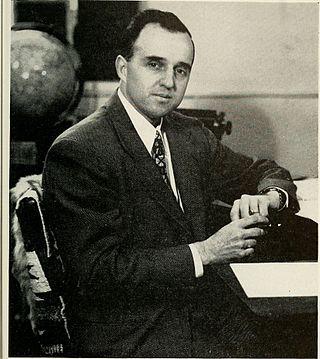
Frank Elmer Peabody, was an American palaeontologist noted for his research on fossil trackways and reptile and amphibian skeletal structure.

The Raymond M. Alf Museum of Paleontology is a paleontology museum in Claremont, California, that is part of The Webb Schools. It is the only nationally accredited museum on a secondary school campus in the United States. The museum has two circular 4,000 sq. ft. exhibition halls and 20,000 unique annual visitors. The collections number about 140,000 specimens, 95% of which were found by Webb students on fossil-collecting trips called “Peccary Trips,” expeditions usually centered in California, Utah, and Montana. The collections consist primarily of vertebrate, invertebrate, and track fossils and the museum's large track collection is widely recognized as one of the most diverse in the world.
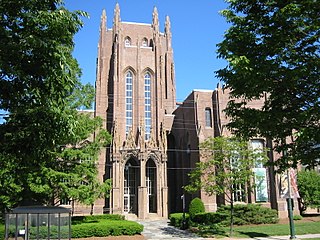
The Peabody Museum of Natural History at Yale University is one of the oldest, largest, and most prolific university natural history museums in the world. It was founded by the philanthropist George Peabody in 1866 at the behest of his nephew Othniel Charles Marsh, an early paleontologist. The museum is best known for the Great Hall of Dinosaurs, which includes a mounted juvenile Brontosaurus and the 110-foot-long (34 m) mural The Age of Reptiles. The museum also has permanent exhibits dedicated to human and mammal evolution; wildlife dioramas; Egyptian artifacts; local birds and minerals; and Native Americans of Connecticut.

The Mace Brown Museum of Natural History is a public natural history museum situated on the campus of The College of Charleston, a public liberal arts college in Charleston, South Carolina. Boasting a collection of over 30,000 vertebrate and invertebrate fossils, the museum focuses on the paleontology of the South Carolina Lowcountry. As an educational and research institution, the museum provides a unique resource for teaching and internationally respected research activities conducted at The College of Charleston. Admission to the museum is free, and donations are welcome. The museum has the holotype specimens of Coronodon, Cotylocara, and Inermorostrum, as well as the reference specimen of Ankylorhiza tiedemani
Sinocephale is a genus of pachycephalosaurid dinosaur that lived in Inner Mongolia, China during the Cretaceous period. The only species, Sinocephale bexelli, was originally named as a species of the genus Troodon in 1953, and later transferred to the genus Stegoceras. After decades of being considered dubious, it was re-evaluated in 2021 and recognized as a valid taxon, being given a unique generic name. The original holotype was lost, with modern research conducted using rediscovered plaster casts. Scant material makes for limited knowledge of its life appearance, but it is distinguished by an embayment on the back of the domed skull, which would give it a heart shape as seen from above. It is potentially the oldest known pachycephalosaurid and falls within the subset of the family called Pachycephalosaurinae, related to animals such as Pachycephalosaurus and Prenocephale. The geologic context of the species has been historically unclear but it is currently thought to originate in rocks belonging to the Ulansuhai Formation.

The Natural History Museum is a museum in Prague in the Czech Republic. It is one of the five components of the National Museum and currently consists of eight departments: the Mineralogical and Petrological, Paleontological, Mycological, Botanical, Entomological, Zoological, Anthropological, and the Ringing Station. The Natural History Museum employs over 80 people, and its collections contain more than 15 million objects, of which only a fraction are exhibited. Ivo Macek has been the director of the museum since 2015.



















